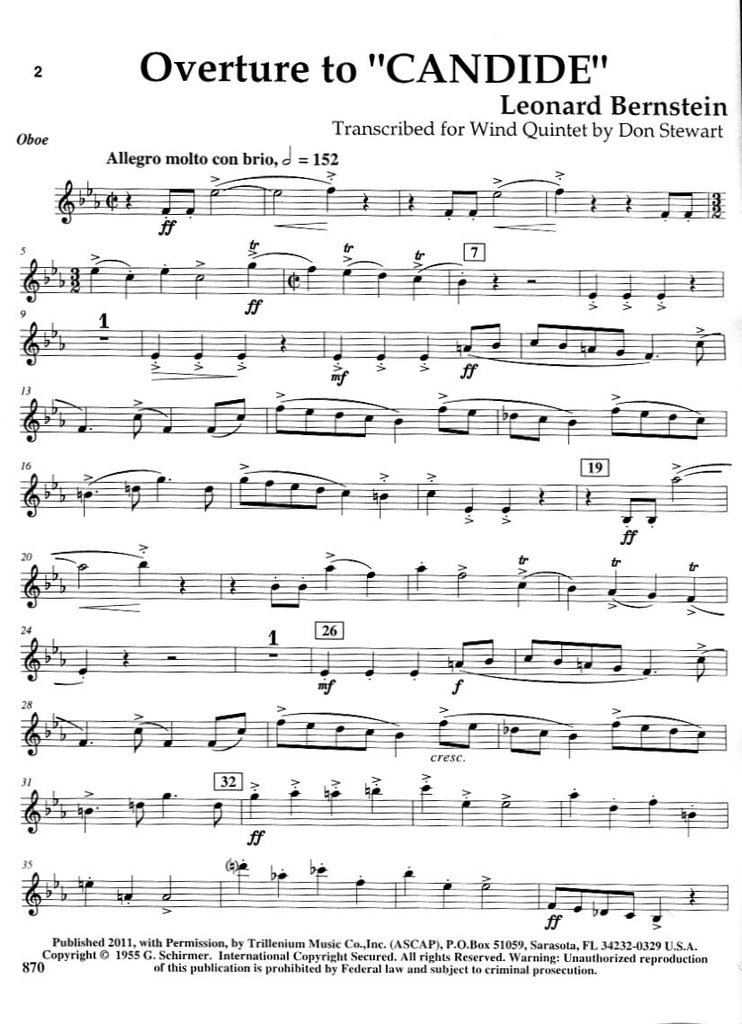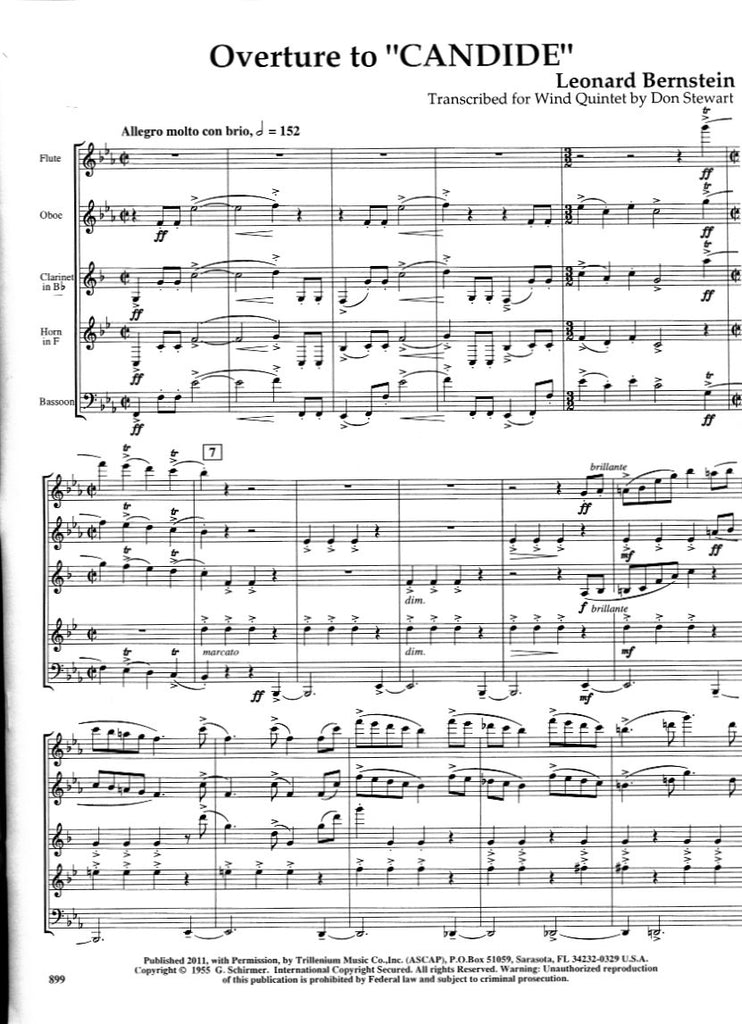

It features two of the show’s big tunes: the sweeping romantic one is Candide’s and Cunégonde’s love duet “Oh Happy We,” while the wacky up-tempo music is from Cunégonde’s fabulous send-up of coloratura soprano arias, “Glitter and Be Gay.”


Brilliantly written and scored, flying at breakneck speed, it pumps up the adrenaline of players and listeners alike. From the very beginning, though, the overture was a hit and swiftly became one of the most popular of all concert curtain raisers. The sparkling overture captures the frenetic activity of the operetta, with its twists and turns, along with Candide’s simple honesty. “There’s more of me in that piece than anything else I’ve done,” he said. In 1989, the already seriously ill Bernstein spent his last ounces of vital energy recording a new concert version of the work. With each revival, Candide won bigger audiences. The critics had rightly noted a marvelous score, and Bernstein and others kept tinkering with the show over the years. Bernstein was less concerned over the money lost than the failure of a work he cared about deeply. Opening on Broadway on December 1, 1956, Candide was perhaps a bit too intellectually weighty for its first audiences and closed after just 73 performances. We’re neither pure nor wise nor good We’ll do the best we know We’ll build our house, and chop our wood, And make our garden grow.” His ultimate emotional maturation concludes in the finale with “You’ve been a fool, and so have I, But come and be my wife, And let us try before we die, To make good sense of life. He returns to Venice with Cunégonde, stripped of his idealism. Candide journeys to Lisbon, Paris, Buenos Aires, and even the legendary El Dorado, only to discover reality in the forms of crime, atrocity, and suffering. Candide escapes and begins an optimistic, satirical journey, taking with him his sweetheart Cunégonde and Pangloss. As he leaves, Bulgarians invade, kidnap him and slaughter everyone except for Cunégonde, who they prostitute out to a rich Jew and the Grand Inquisitor. Pangloss, who preaches the philosophy that all is for the best in “The Best of All Possible Worlds.”Ĭandide and Cunégonde kiss, and Candide is banned from Westphalia. Within these walls live the Baron and Baroness Cunégonde, their beautiful and innocent virgin daughter Maximilian, their handsome son Candide, their handsome bastard nephew and Paquette, the Baroness’ buxom serving maid. Adapted by Lillian Hellman from Voltaire’s 18th-century satire on blind optimism, Bernstein’s Candide is an operetta set in the castle of the Baron Thunder-ten-Tronckh in the mythical European land of Westphalia. High school and collegiate ensembles can have success with this work, although younger ensembles should expect a need for more preparation time than normally expected of a four-and-a-half minute piece.Ĭandide was Leonard Bernstein’s third Broadway musical, following On the Town and Wonderful Town. While exciting for audiences, this technique requires an ensemble capable of exceptional metronomic control. Bernstein manipulates time to eradicate a sense of regular downbeats. Overture to Candide can be deceptive on the surface it is a jovial, straightforward concert opener, yet the musical challenges it presents reflect compositional sophistication. Piccolo, measure 223, last eighth note should be F, last quarter note should be E-flat.E-flat Alto Saxophone I, measure 218, beat 3 quarter note is a G in the score, and an F on the part - it should be a G.Difficulty: VI (see Ratings for explanation)Ĭost: Score and Parts - $90.00 | Score Only - $19.99


 0 kommentar(er)
0 kommentar(er)
